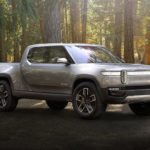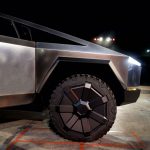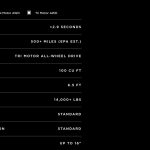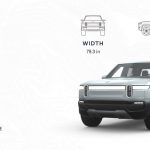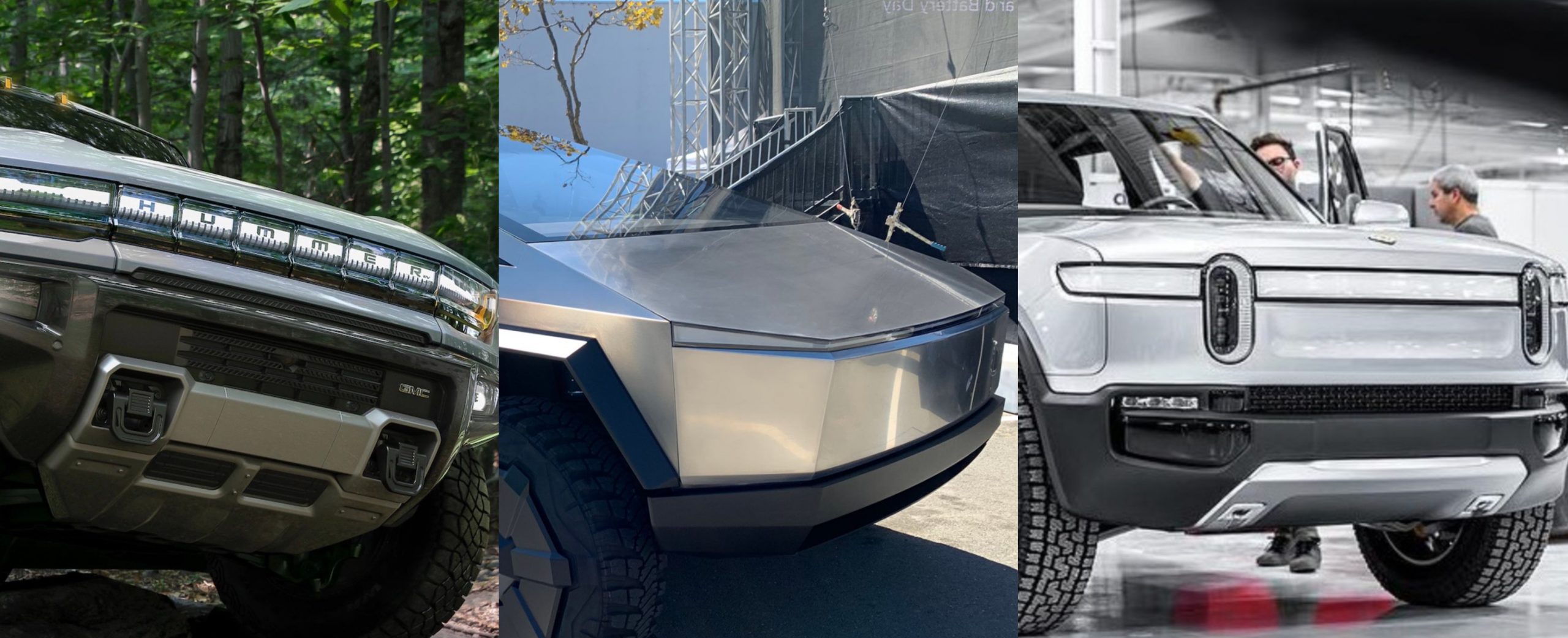
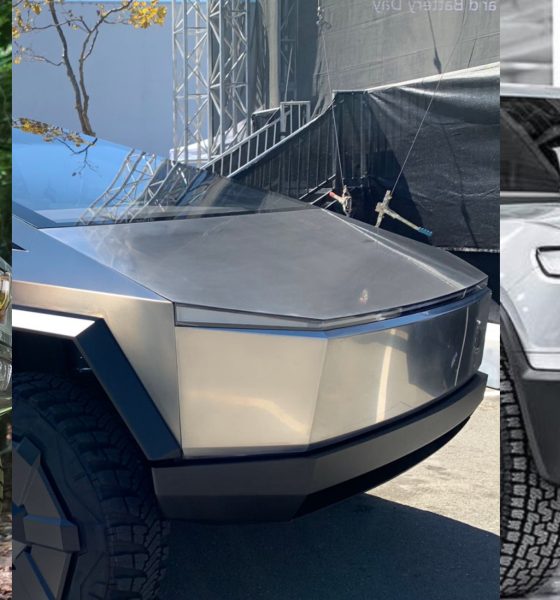
News
GMC Hummer EV vs Tesla Cybertruck vs Rivian R1T: price and specs comparison
Legacy automaker General Motors recently unveiled the Hummer EV, a monster of a vehicle that will be pitted against other all-electric trucks like the Tesla Cybertruck and the Rivian R1T. The Hummer EV isn’t just another rival in the sustainable pickup truck market. The rivalry between the GMC Hummer EV, the Tesla Cybertruck, and the Rivian R1T also represents the battle between legacy automakers and new kinds of auto manufacturers.
Price
GM seems to have gone a different route when deciding the Hummer EV’s price. GM plans to release four variants of the all-electric “supertruck:” the EV2, EV2X, EV3X, and the limited Hummer EV Edition 1. The base model’s starting price is $79,995 with a reservation fee of $100.
Each subsequent model’s price is raised by about $10,000, except the limited edition Hummer Edition 1. For example, the Hummer EV2X costs $89,995 and the EV3X costs $99,995. The Hummer EV Edition 1, on the other hand, starts at $112,595.
Tesla and Rivian’s EV pickup trucks are priced significantly less than the GM Hummer EV. The Rivian R1T starts at $69,000, though speculations suggest that the production truck will be more affordable. But even at its original price, the R1T is $10,000 less than GM’s cheapest all-electric pickup truck. Rivian’s R1T has a reservation fee of $1000.
When it comes to pricing, however, Tesla’s Cybertruck takes the cake with a starting price of $39,990 for its single motor RWD variant. Tesla set a reservation fee of $100 for the Cybertruck. Tesla seemed to go the opposite direction as the other two automakers and set the price for its top-tier Cybertruck at $69,900. This makes the top-tier Cybertruck Tri-Motor AWD more affordable than the GMC Hummer EV’s base variant.
Price may not be the main factor that sways potential customers from one EV pickup to another. GMC, Tesla, and Rivian have packed their EV trucks with the best specs and features possible. In the end, these specs and features may be the deciding factor for buyers.
- The Rivian R1T promises to bring electrification to the luxury adventure industry. (Credit: Rivian)
- Tesla Cybertruck futuristic aero wheel makes debut in Los Angeles unveiling event on Nov. 21, 2019 (Photo: Teslarati)
- (Credit: GMC)
Range and Performance
When it comes to range and performance in the EV market, Tesla sets the bar high. Tesla’s in-depth knowledge in battery technology has given it a serious edge against the competition, most notably legacy automakers like GM.
For the purposes of this comparison, Teslarati will be looking at top-tier variant of each EV pickup truck. In GM’s case, the Hummer EV Edition 1 has a tri-motor setup with an estimated 350+ miles of range. According to the OEM, the Hummer EV can run 0-60 mph in approximately 3 seconds.
Rivian’s R1T pickups beat the Hummer EV’s range, reaching up to 400+ miles on a single charge. In terms of performance, the R1T matches GM’s Hummer EV with the ability to run 0-60 mph in 3 seconds.
The Cybertruck will be Tesla’s first entry into the pickup truck market, but the company certainly didn’t hold back when it came to range and performance. The tri-motor Cybertruck is expected to have an EPA-estimated range of 500+ miles and can run 0-60 mph in about 2.9 seconds.
Unique Features
When it comes to novel features, GMC has some tricks up its sleeve. After all, the legacy automaker has been in the pickup truck market for decades and has enough experience to understand what Hummer customers want. When Rivian revealed the R1T, it seemed to understand the pickup truck market’s customer base well, too.
When it comes to vehicles, utility is a top priority, most especially for pickup truck buyers. Rivian understood that useful features mattered and included features like a cleaver gear tunnel and “Tank Turn.” Both features were specifically included in the Rivian R1T with the pickup customer in mind.
The GMC Hummer EV also has some features specifically tailored for pickup owners. During its unveiling, GM introduced the Hummer EV’s CrabWalk feature which allows the vehicle to navigate tricky terrain. The legacy automaker also included adaptive air suspension.
- (Credit: Tesla)
- (Credit: Rivian)
- (Credit: GMC)
Tesla’s focus has always been on sustainability, but it still managed to include some unique features in the Cybertruck. The adaptive air suspension GM announced for the Hummer EV was also seen in the Cybertruck during its unveiling.
The bed of the Cybertruck includes 110v/220v outlets, which impressed many pickup truck owners who use power tools for work or recreation. Tesla’s pickup truck also has Camp Mode, which allows passengers to sleep in their vehicles comfortably without draining the batteries.
Camp Mode is not unique to the Tesla Cybertruck. The feature is available in all Tesla vehicles. But it’s one of many features that neither GM nor Rivian has announced for their pickup trucks. Camp Mode will not be the only quirky Tesla feature that will make it to the Cybertruck, too. There are also features like Dog Mode and the multiple entertainment features available in Tesla vehicles like Caraoke.
Conclusion
Tesla and Rivian, especially the former, have forged their own path in the auto industry. Both car companies have committed to manufacturing sustainable vehicles with great performance and look good doing it.
In comparison, General Motors Truck Co. has been one of the leading car manufacturers in the world for decades and has created some of the toughest pickup trucks ever made. So it’s no surprise everyone wondered what GMC would bring to the table when it announced the Hummer EV.
Given each automaker’s competencies, the battle between the GM Hummer EV, Tesla Cybertruck, and Rivian R1T could decide the future of the electric pickup market. Nevertheless, the presence of the three all-electric trucks in the market today bodes well for the shift to sustainability as a whole. Every GMC Hummer EV sold is one less ICE truck on the road, after all.
Watch an in-depth look at the GMC Hummer EV in the video below.

Elon Musk
Elon Musk’s X will start using a Tesla-like software update strategy
The initiative seems designed to accelerate updates to the social media platform, while maintaining maximum transparency.

Elon Musk’s social media platform X will adopt a Tesla-esque approach to software updates for its algorithm.
The initiative seems designed to accelerate updates to the social media platform, while maintaining maximum transparency.
X’s updates to its updates
As per Musk in a post on X, the social media company will be making a new algorithm to determine what organic and advertising posts are recommended to users. These updates would then be repeated every four weeks.
“We will make the new 𝕏 algorithm, including all code used to determine what organic and advertising posts are recommended to users, open source in 7 days. This will be repeated every 4 weeks, with comprehensive developer notes, to help you understand what changed,” Musk wrote in his post.
The initiative somewhat mirrors Tesla’s over-the-air update model, where vehicle software is regularly refined and pushed to users with detailed release notes. This should allow users to better understand the details of X’s every update and foster a healthy feedback loop for the social media platform.
xAI and X
X, formerly Twitter, has been acquired by Elon Musk’s artificial intelligence startup, xAI last year. Since then, xAI has seen a rapid rise in valuation. Following the company’s the company’s upsized $20 billion Series E funding round, estimates now suggest that xAI is worth tens about $230 to $235 billion. That’s several times larger than Tesla when Elon Musk received his controversial 2018 CEO Performance Award.
As per xAI, the Series E funding round attracted a diverse group of investors, including Valor Equity Partners, Stepstone Group, Fidelity Management & Research Company, Qatar Investment Authority, MGX, and Baron Capital Group, among others. Strategic partners NVIDIA and Cisco Investments also continued support for building the world’s largest GPU clusters.
News
Tesla FSD Supervised wins MotorTrend’s Best Driver Assistance Award
The decision marks a notable reversal for the publication from prior years, with judges citing major real-world improvements that pushed Tesla’s latest FSD software ahead of every competing ADAS system.

Tesla’s Full Self-Driving (Supervised) system has been named the best driver-assistance technology on the market, earning top honors at the 2026 MotorTrend Best Tech Awards.
The decision marks a notable reversal for the publication from prior years, with judges citing major real-world improvements that pushed Tesla’s latest FSD software ahead of every competing ADAS system. And it wasn’t even close.
MotorTrend reverses course
MotorTrend awarded Tesla FSD (Supervised) its 2026 Best Tech Driver Assistance title after extensive testing of the latest v14 software. The publication acknowledged that it had previously criticized earlier versions of FSD for erratic behavior and near-miss incidents, ultimately favoring rivals such as GM’s Super Cruise in earlier evaluations.
According to MotorTrend, the newest iteration of FSD resolved many of those shortcomings. Testers said v14 showed far smoother behavior in complex urban scenarios, including unprotected left turns, traffic circles, emergency vehicles, and dense city streets. While the system still requires constant driver supervision, judges concluded that no other advanced driver-assistance system currently matches its breadth of capability.
Unlike rival systems that rely on combinations of cameras, radar, lidar, and mapped highways, Tesla’s FSD operates using a camera-only approach and is capable of driving on city streets, rural roads, and freeways. MotorTrend stated that pure utility, the ability to handle nearly all road types, ultimately separated FSD from competitors like Ford BlueCruise, GM Super Cruise, and BMW’s Highway Assistant.
High cost and high capability
MotorTrend also addressed FSD’s pricing, which remains significantly higher than rival systems. Tesla currently charges $8,000 for a one-time purchase or $99 per month for a subscription, compared with far lower upfront and subscription costs from other automakers. The publication noted that the premium is justified given FSD’s unmatched scope and continuous software evolution.
Safety remained a central focus of the evaluation. While testers reported collision-free operation over thousands of miles, they noted ongoing concerns around FSD’s configurable driving modes, including options that allow aggressive driving and speeds beyond posted limits. MotorTrend emphasized that, like all Level 2 systems, FSD still depends on a fully attentive human driver at all times.
Despite those caveats, the publication concluded that Tesla’s rapid software progress fundamentally reshaped the competitive landscape. For drivers seeking the most capable hands-on driver-assistance system available today, MotorTrend concluded Tesla FSD (Supervised) now stands alone at the top.
News
Elon Musk’s Grokipedia surges to 5.6M articles, almost 79% of English Wikipedia
The explosive growth marks a major milestone for the AI-powered online encyclopedia, which was launched by Elon Musk’s xAI just months ago.

Elon Musk’s Grokipedia has grown to an impressive 5,615,201 articles as of today, closing in on 79% of the English Wikipedia’s current total of 7,119,376 articles.
The explosive growth marks a major milestone for the AI-powered online encyclopedia, which was launched by Elon Musk’s xAI just months ago. Needless to say, it would only be a matter of time before Grokipedia exceeds English Wikipedia in sheer volume.
Grokipedia’s rapid growth
xAI’s vision for Grokipedia emphasizes neutrality, while Grok’s reasoning capabilities allow for fast drafting and fact-checking. When Elon Musk announced the initiative in late September 2025, he noted that Grokipedia would be an improvement to Wikipedia because it would be designed to avoid bias.
At the time, Musk noted that Grokipedia “is a necessary step towards the xAI goal of understanding the Universe.”
Grokipedia was launched in late October, and while xAI was careful to list it only as Version 0.1 at the time, the online encyclopedia immediately earned praise. Wikipedia co-founder Larry Sanger highlighted the project’s innovative approach, noting how it leverages AI to fill knowledge gaps and enable rapid updates. Netizens also observed how Grokipedia tends to present articles in a more objective manner compared to Wikipedia, which is edited by humans.
Elon Musk’s ambitious plans
With 5,615,201 total articles, Grokipedia has now grown to almost 79% of English Wikipedia’s article base. This is incredibly quick, though Grokipedia remains text-only for now. xAI, for its part, has now updated the online encyclopedia’s iteration to v0.2.
Elon Musk has shared bold ideas for Grokipedia, including sending a record of the entire knowledge base to space as part of xAI’s mission to preserve and expand human understanding. At some point, Musk stated that Grokipedia will be renamed to Encyclopedia Galactica, and it will be sent to the cosmos.
“When Grokipedia is good enough (long way to go), we will change the name to Encyclopedia Galactica. It will be an open source distillation of all knowledge, including audio, images and video. Join xAI to help build the sci-fi version of the Library of Alexandria!” Musk wrote, adding in a later post that “Copies will be etched in stone and sent to the Moon, Mars and beyond. This time, it will not be lost.”
